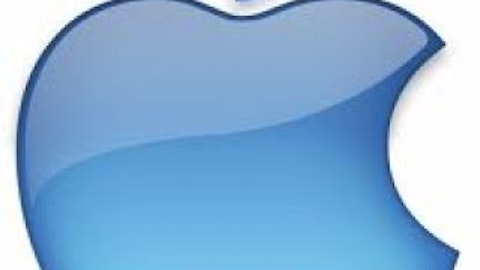It took more than five years, but the Dow Jones Industrial Average 2 Minute (Dow Jones Indices: .DJI) has officially surpassed its previous record. The road to this new stock-market high has been a painful one, including (but not limited to) a mortgage meltdown, a collapse of the financial markets, and the threat of the U.S. economy free-falling over the fiscal cliff. Even though many investors are fearful that the market will retreat as it did the last time it hit a new high, conditions aren’t the same as they were in 2007.

Without a doubt, the Dow’s recent rise has impressed investors. The index is up roughly 115% from its March 2009 low. But a lot has changed.
Here are three reasons why that’s the case.
1. The economy is moderately improving
OK, in October 2007, the economy was growing at a stronger rate than it is today. But it was also signaling a slowdown. By comparison, there are signs today that the economy is improving. For example, we’re seeing a rebound in housing and an improvement in the jobs market. Despite recent events like payroll tax increases, spending cuts, and higher gas prices, the economy is growing at a modest clip.
2. Lower interest rates are helping the economy
Five years ago, short-term interest rates stood at roughly 4%, and the Fed promptly started cutting interest rates to stimulate economic growth. Today, those same rates are close to 0.1%. Further, long-term interest rates were higher: In late 2007, the 10-year Treasury rate stood at about 4.5% compared with 1.9% today. Depressingly, those low rates shriveled the income you receive from your CDs and bonds, but they’re helping to heal the U.S. economy. Corporations are borrowing more money to fund business operations, buy back shares, and pay out dividends.
3. Stock valuations are more attractive today
The S&P 500‘s forward price-to-earnings ratio is roughly 13.7 today. By comparison, in October 2007, this ratio was close to 15. That indicates that stocks are less expensive and appear more attractively valued these days.
For the patient, long-term investor, today’s environment of modest economic growth and solid corporate earnings hints that the stock market can continue to perform favorably.
Keep on keeping on
Despite the new market high, several stocks in attractive industries trade at juicy bargains. For example, our aging population will increasingly demand more medicine and health care treatments. Teva Pharmaceutical Industries Ltd (ADR) (NYSE:TEVA) makes and markets generic drugs in all major treatment categories from cancer to Parkinson’s disease to asthma. Near its 52-week low, the stock boasts a forward price-to-earnings ratio of seven and pays an attractive 2.8% dividend yield. And branded-drug maker Pfizer Inc. (NYSE:PFE) boasts a strong drug pipeline and ample emerging-market growth potential. The company is refocusing on its core pharmaceutical business by selling or spinning off some non-pharma divisions. Pfizer pays shareholders a hefty 3.5% dividend, and its stock trades at a forward P/E ratio of 12.
Developing markets make up a sliver of Caterpillar Inc. (NYSE:CAT)‘s sales, but they’ll likely become a bigger slice of revenue as the trend in global urbanization unfolds, increasing demand for construction. This leading manufacturer of heavy-duty equipment boasts an attractive forward P/E ratio of 10 and rewards investors with a 2.3% dividend yield.
Both QUALCOMM, Inc. (NASDAQ:QCOM) and Apple Inc. (NASDAQ:AAPL) boast plentiful growth prospects and enticing valuations, even with the Dow trading above 14,300. In addition to its impressive patent portfolio, QUALCOMM, Inc. (NASDAQ:QCOM)’s solid positioning in smartphone chips gives investors an opportunity to participate in the overall mobile trend. Meanwhile, Apple’s record sales of its prolific iDevices help drive mobile data traffic to new highs. Global mobile data traffic more than doubled in 2011 and is expected to continue doubling annually. QUALCOMM, Inc. (NASDAQ:QCOM) and Apple trade at respective forward price-to-earnings ratios of 14 and nine.
Surely, these five stocks, along with others, will experience dips. After all, past stock-market gains weren’t achieved without rough patches along the way. So when these declines occur, remember to remain steadfast and disciplined. Don’t forget that pullbacks are an unavoidable part of investing.
Foolish bottom line
This new stock-market high, coupled with sound economic fundamentals, signals that we’re moving in the right direction. Even though the stock market performance in the near term may not equal the gains of the recent past, now is still a good time for long-term investors to add high-quality stocks.
The article 3 Reasons Why the Stock Market of 2013 Isn’t the Same as 2007 originally appeared on Fool.com and is written by Nicole Seghetti.
Fool contributor Nicole Seghetti owns shares of Apple, Pfizer, and Caterpillar. Follow her on Twitter @NicoleSeghetti. The Motley Fool recommends Apple. The Motley Fool owns shares of Apple and Qualcomm.
Copyright © 1995 – 2013 The Motley Fool, LLC. All rights reserved. The Motley Fool has a disclosure policy.




